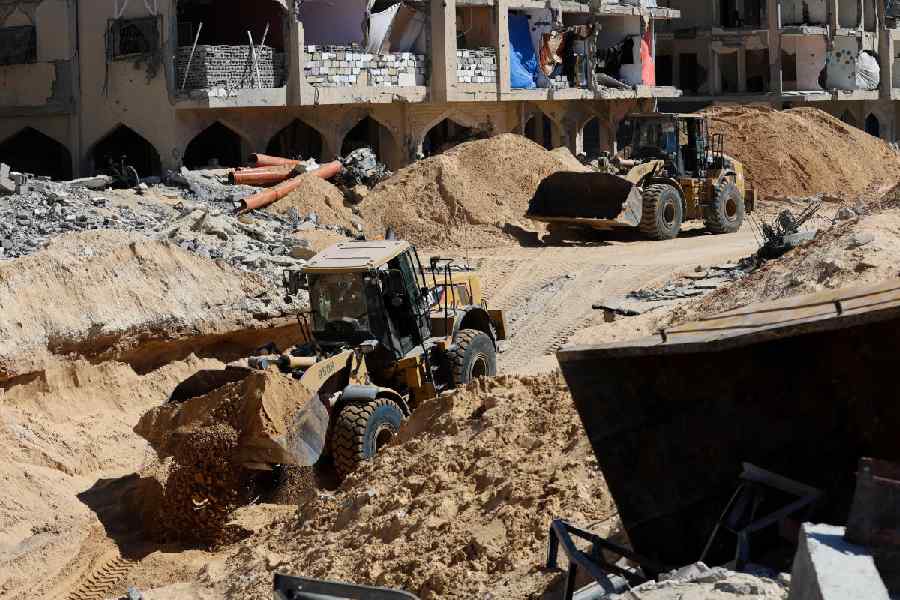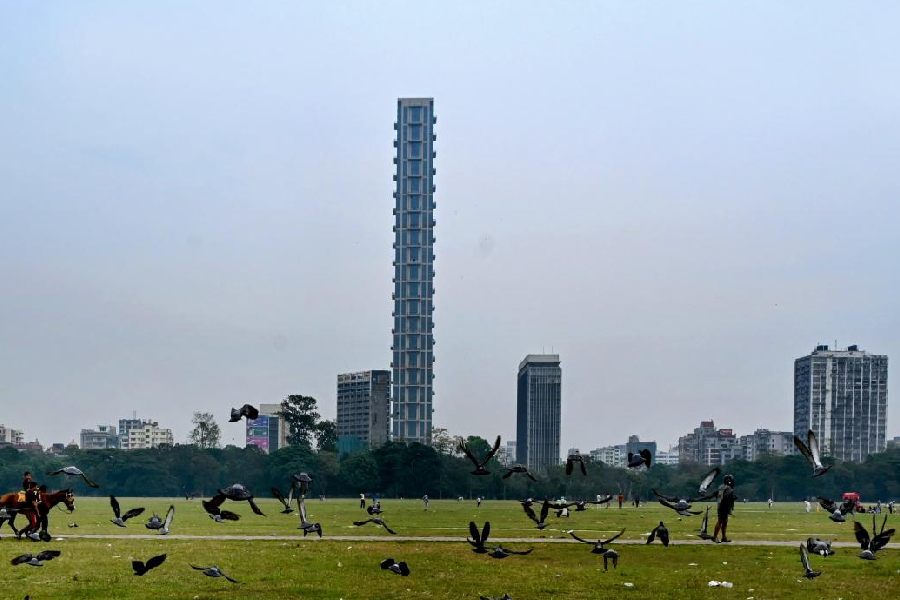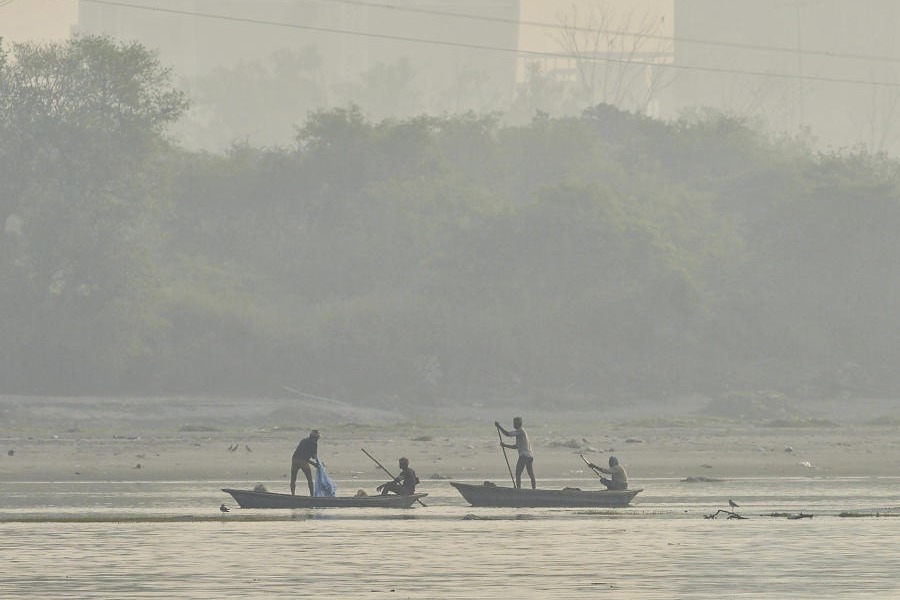 |
| A limestone cave in Meghalaya affected by a cement factory |
The Northeast is truly mystifying. This conundrum gets even more complicated each time the Government of India (GOI) decides to ?do something for the region?. In its attempts to devise methods of blocking development funds from flowing into the coffers of militant groups in the region and to suggest development paradigms, the Centre constituted a committee comprising retired and serving civil servants, retired army officers and a serving vice-chancellor of the region. Born in November 2001 and christened the North East Study Group (NESG), this motley group was asked to develop a long-range vision for the Northeast in the context of liberalisation, biotechnology, and the information revolution and their impact on the region and its people. Like other policy-makers sitting in Delhi, this group too could not refrain from stating the obvious, ?to integrate the Northeast culturally, economically and politically with the rest of the country.?
From the look of the report submitted by the group, what is apparent is that it operated from the angle that many of those on board are already familiar with the problems in the region and are, therefore, best suited to offer what they call ?not a prescriptive solution but consultative remedies?. Clearly, the group relied heavily on its own pre-conceived notions about the region, which are partly military in context and partly administrative. Given a two-year term, the group would have completed its study and submitted its reports. But states like Manipur are still very much in the throes of militancy and much of the development corpus is shared by sundry militant groups. So what has a happened to the recommendations? Are they not another futile attempt at prescribing medicines to the Northeast without knowing what its aliments actually are?
?Expert? views
There is no single person or organisation that can claim to be ?a Northeast expert?. Even those of us in the region may be familiar with the peculiar forces that drive our own state but we would hardly qualify to prescribe remedies for other states because the internal dynamics are so different in each state. To expect a group that has not lived in the region for a sufficiently long time to come up with a list of prescriptions is too far-fetched a strategy. But this error has been repeated by the Centre again and again without learning any lessons.
In recent times a new phenomenon has taken birth which could be dangerous for the region and for individual states. Each year, quite a few civil servants retire from government service. It has become commonplace for them to evolve a policy usually referred to as the ?revolving door policy? whereby they can be re-employed in a non-governmental organisation (NGO). Such NGOs are usually funded by some departments of the government at the behest of the same civil servant while he was in service. This peculiar phenomenon could prove detrimental to the health of the state because a civil servant who has spent 30 or more years in service and was responsible for creating all the developmental logjams in the first place, is now attempting to prescribe medicines for his own mistakes and also trying to implement developmental projects through his NGO.
What is distressing is that a large number of retired civil servants and military personnel have a strong lobby in Delhi from where funds are sourced. Hence, even after retirement from active service they can still travel on executive class to the Northeast on the pretext of being experts who can help us. Each time such a thing happens, Delhi is in fact denigrating and demoralising the intellectual wealth and capacity of people in the region who could at least be said to know better about themselves than some retired bureaucrat from North or South or Western India. What is even more galling about such NGOs, which make flying visits to the region is that they do not even consult people across the social and political spectrum.
Very conflicting signals are sent out from the Northeast to the rest of India about its industrial prospects merely because the region possesses raw materials in abundance. While the North East Study Group could be credited with at least one sensible recommendation, which is that the region is a horticultural paradise and therefore needs food processing units, others like the Federation of Industries, North Eastern Region (Finer) have suggested an urgent need for ?massive industrialisation?. Not once has the paper presented by Finer at a business summit in Mumbai speak about the fragile bio-diversity of the region which stands threatened by what they prescribe as ?massive industrialisation?.
What is dangerous is that the stakeholders in industry and commerce and the government are totally disconnected from the environmental impact and subsequent disasters awaiting the region if they decide to pursue a path of ruthless industrialisation at any cost. Ironically, the North Eastern Council (NEC), in its ornate magazine called, New Hopes, New Opportunities, has a section on industry. This chapter, with the name Limestone and Coal: Untapped Resources So Far, says that eight industries have been subjected to an Analytical Hierarchy Process in order to select those industries for which pre-feasibility study was taken up. Analytical Hierarchy Process is a multi-criteria decision-making technique by which hierarchy of various alternatives is determined. Three industries, namely cement, thermal power plant and bricks, which have the highest ratings, have been taken up. Apparently, the pre-feasibility study includes information such as market attractiveness, raw materials, technology, plant location, implementation schedule and financial indicators. What is surprising is that the Analytical Hierarchy Process study completely ignores environmental concerns.
Attack on nature
NEC?s suggestions for improving cement production in the region seem like a direct attack on the environment. The recommendation says, ?Although there is ample scope for setting up large cement plants in the region, investors from within and outside the region have hesitated to do so due to law and order problem in the region.? Hence, it says, it would be easier for the region to attract medium-level investment (say in the range of Rs 50-100 crore) with a production capacity of 600 tons per day capacity. NEC suggests that cement plants can be set up at various feasible locations in close proximity to the limestone reserves. Its own lack of sensitivity to the environmental degradation that could come about through blasting limestone caves is truly appalling. Limestone caves are a heritage site in themselves and support large cave systems in states like Meghalaya. How come the feasibility study did not look at possible environmental destruction?
Today, landowners in Lumshonong, Jaintia Hills, where the limestone mines are located and employees of Cement Manufacturing Company Limited are up in arms against environmentalists protesting the destruction of caves. Such a situation would not have arisen if the Northeast was not projected as a destination for largescale cement industries or if the Northeast Industrial Policy had a strong environmental component. This clearly shows that economists and industrialists have been planning things in isolation without consulting the department of environment and forests.
Existing plans for marketing the Northeast seem like a one-way ticket to hell for the entire region.











